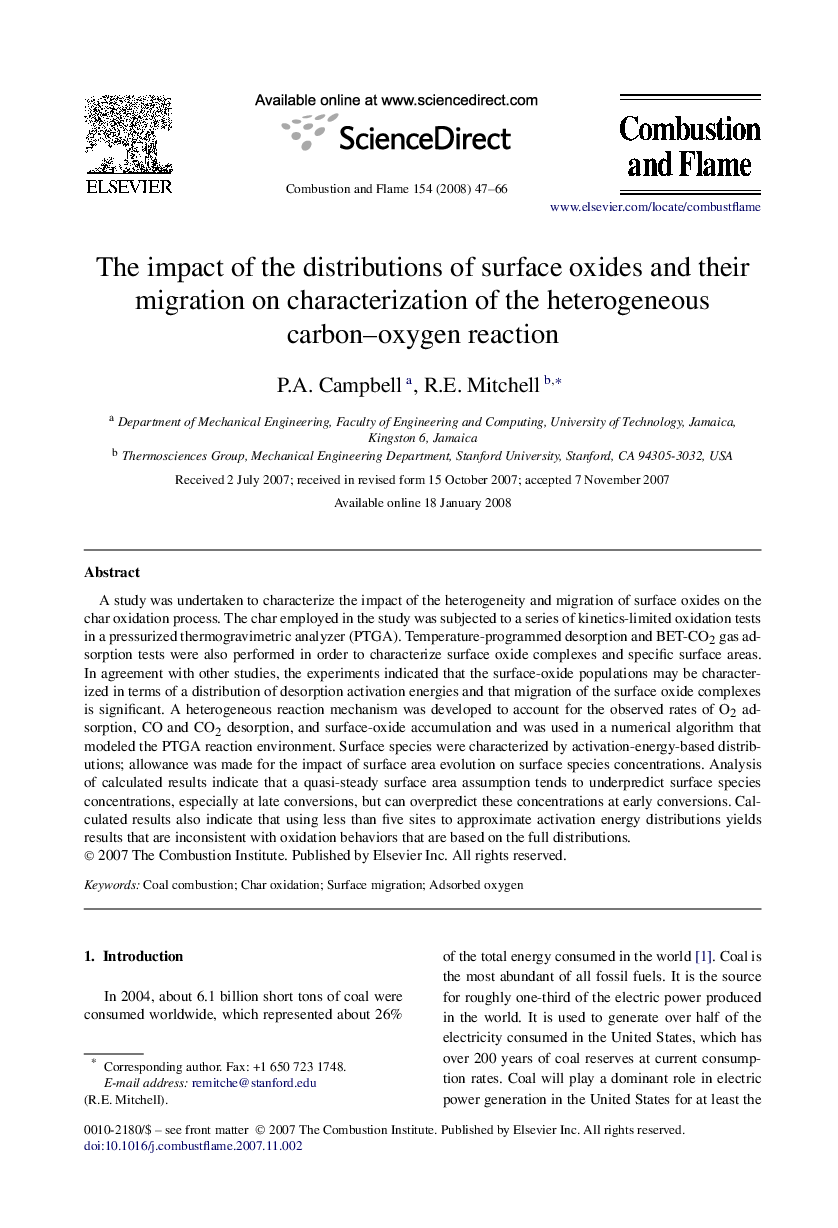| Article ID | Journal | Published Year | Pages | File Type |
|---|---|---|---|---|
| 167846 | Combustion and Flame | 2008 | 20 Pages |
A study was undertaken to characterize the impact of the heterogeneity and migration of surface oxides on the char oxidation process. The char employed in the study was subjected to a series of kinetics-limited oxidation tests in a pressurized thermogravimetric analyzer (PTGA). Temperature-programmed desorption and BET-CO2 gas adsorption tests were also performed in order to characterize surface oxide complexes and specific surface areas. In agreement with other studies, the experiments indicated that the surface-oxide populations may be characterized in terms of a distribution of desorption activation energies and that migration of the surface oxide complexes is significant. A heterogeneous reaction mechanism was developed to account for the observed rates of O2 adsorption, CO and CO2 desorption, and surface-oxide accumulation and was used in a numerical algorithm that modeled the PTGA reaction environment. Surface species were characterized by activation-energy-based distributions; allowance was made for the impact of surface area evolution on surface species concentrations. Analysis of calculated results indicate that a quasi-steady surface area assumption tends to underpredict surface species concentrations, especially at late conversions, but can overpredict these concentrations at early conversions. Calculated results also indicate that using less than five sites to approximate activation energy distributions yields results that are inconsistent with oxidation behaviors that are based on the full distributions.
